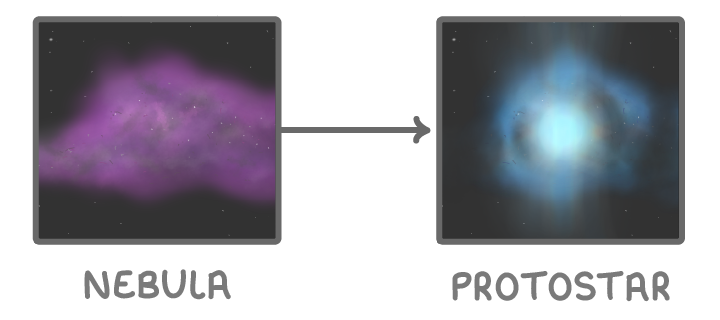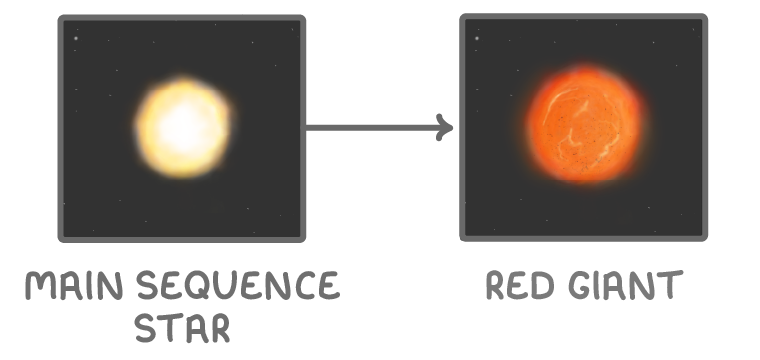Stellar Evolution
This lesson covers:
- How stars are formed from clouds of gas and dust
- The process by which protostars become main sequence stars
- The red giant phase when stars expand after hydrogen fuel depletion
- The fates of low, medium, and high mass stars
- The properties of resulting neutron stars and black holes
Star formation
Stars begin forming in nebulae - large clouds of gas and dust floating in space. Gravity causes the nebula to collapse and fragment into clumps known as protostars. As the protostars shrink, they heat up in the core.

Eventually the temperature reaches millions of degrees and nuclear fusion of hydrogen into helium begins. Radiation pressure produced by fusion halts further contraction. The star has now reached the main sequence where it will remain stable for a long period, fusing hydrogen into helium in the core.
Expansion into Red Giants
When the hydrogen fuel in the core runs out, fusion stops, removing the outward pressure. The core starts contracting while the outer layers expand and cool. The star becomes a red giant.

The contracting core heats up the surrounding hydrogen, allowing fusion to start in a shell around the core. This is shell hydrogen burning. The core continues contracting, eventually getting hot enough for helium fusion.
The evolution of low mass stars
In low mass stars like the Sun, no further fusion is possible after helium burning ends. The core contracts until electron degeneracy pressure halts collapse at a white dwarf state. The outer layers are ejected as beautiful planetary nebulae.
White dwarfs simply fade and cool over billions of years as they radiate away their residual thermal energy.
The evolution of high mass stars
In high mass stars, fusion continues until an iron core forms. The star expands and cools to form a red supergiant before its core collapses, causing tremendous shockwaves. This results in a spectacular supernova explosion, leaving behind either:
- neutron star - extremely dense cores made of neutrons.
- black hole - masses more than 3 times the Sun's crunch down endlessly to singularities.

Neutron Stars and Pulsars
Neutron stars can spin at insane speeds while emitting radio wave pulses like cosmic lighthouses. These rotating radio sources are called pulsars.
Some pulsars rotate over 600 times per second due to conservation of angular momentum from the progenitor star. Their radio beams sweep past Earth, producing regular pulses.
Summary of stellar evolution
The evolution of a star depends on it's mass. The diagram below summarises the evolution of both low and high mass stars.
